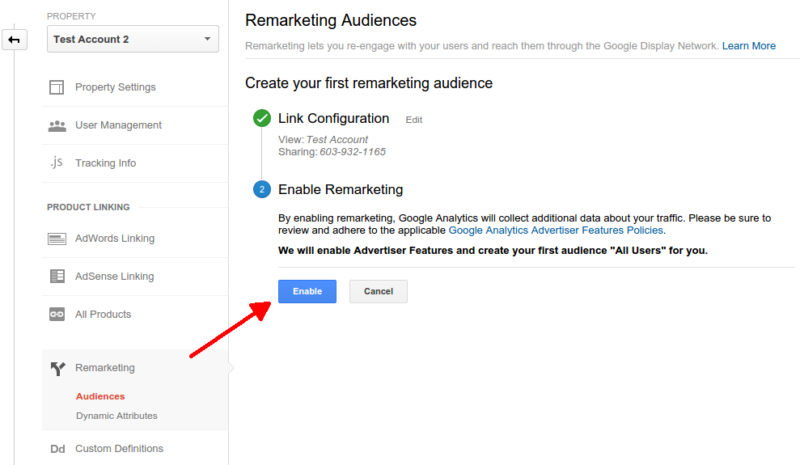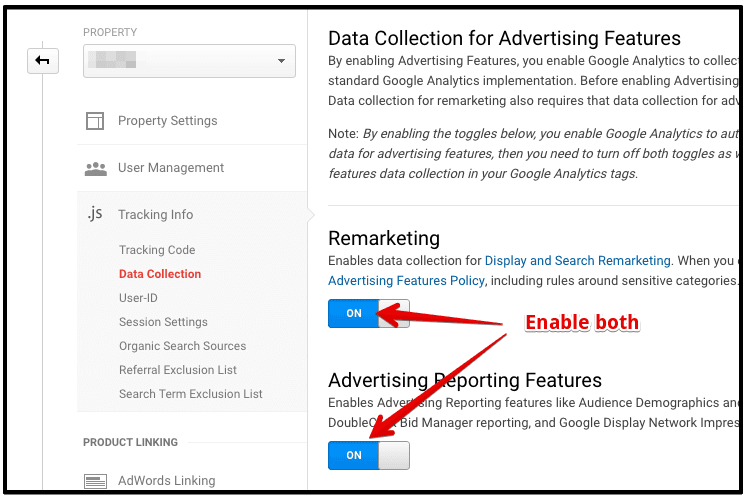Key Features of Remarketing In Google Analytics Explained
Key Features of Remarketing In Google Analytics Explained
Blog Article
Optimize Your ROI With Remarketing in Google Analytics
In the world of electronic advertising and marketing, the application of remarketing methods within Google Analytics has actually confirmed to be a powerful device for enhancing return on financial investment. By utilizing the power of user data and tailoring advertisements to particular audience sections, organizations can significantly amplify their conversion rates. The real essential lies in the art of precision - understanding user habits, crafting engaging ads, and constantly refining approaches to drive optimum results. The journey to taking full advantage of ROI with remarketing is a nuanced course paved with insights and chances that can reshape the trajectory of your advertising endeavors.
Understanding Remarketing in Google Analytics
Understanding remarketing in Google Analytics is vital for enhancing your electronic advertising technique. Remarketing allows you to target users who have previously visited your web site or engaged with your app, providing them with customized ads as they browse other websites or make use of other apps within the Google Present Network. This technique aids maintain your brand top of mind and urges customers to return to your website, ultimately raising the chance of conversion.
By utilizing Google Analytics, you can track the performance of your remarketing projects, gaining important understandings into customer actions, involvement, and conversions. This data enables you to fine-tune your targeting, messaging, and bidding approaches to boost the overall performance of your campaigns.
Furthermore, comprehending the various sorts of remarketing checklists offered in Google Analytics, such as standard, dynamic, and similar audiences, permits you to produce individualized and very segmented projects customized to certain individual sections. This level of granularity can substantially improve the significance and effect of your remarketing efforts, ultimately maximizing your return on investment.
Establishing Remarketing Checklists
To successfully execute remarketing campaigns in Google Analytics, the preliminary step involves creating and setting up remarketing listings targeting particular user sectors based upon their interactions with your website or app. By establishing remarketing lists, you can tailor your advertising initiatives to reach users that have actually already shown rate of interest in your solutions or items.
To begin, browse to the Admin section of your Google Analytics account and select the Property where you wish to develop the remarketing list. Then, under the Home column, click 'Audience Definitions' and choose 'Target markets.' Next, click the red 'New Audience' switch and select 'Develop New' to define the criteria for your remarketing list.

Crafting Efficient Remarketing Ads

When crafting pop over to this web-site your ads, concentrate on creating eye-catching headlines and compelling visuals that attract attention to potential customers. Integrate strong calls-to-action that motivate users to revisit your site and finish a desired action. Use vibrant remarketing to show tailored ads featuring products or solutions that individuals have previously seen on your website.
Furthermore, ensure that your advertisements are mobile-friendly considering that a significant portion of net website traffic comes from mobile phones. Test various ad variants to identify which styles and messages drive the best results. By constantly refining and enhancing your remarketing ads based on performance data, you can maximize their effectiveness and boost your return on investment.
Analyzing Remarketing Efficiency

Through Google Analytics, online marketers can track the performance of their remarketing campaigns in real-time, enabling them to determine fads, patterns, and locations for renovation immediately. By evaluating the information, marketing experts can figure out which advertisements are performing well, which audience segments are reacting favorably, and which networks are driving the most conversions. This level of granularity allows online marketers to make data-driven choices to maximize their remarketing advocate better results.
Optimizing ROI With Remarketing
Analyzing remarketing information in Google Analytics makes it possible for marketing experts to determine chances for enhancing roi (ROI) through strategic adjustments - What Is “Remarketing” In Google Analytics?. To make best use of ROI with remarketing, it is official website essential to recognize the actions of your target market. By examining user interactions, such as the pages they went to, the items they checked out, or the actions they took on your website, you can tailor your remarketing projects better
Segmenting your target market based on their behavior allows you to create customized and targeted advertisements that are more probable to resonate with them. By revealing appropriate ads to details segments of your audience, you can boost the possibilities of conversion and eventually boost your ROI.
Moreover, evaluating various ad creatives, messaging, and offers can help recognize what resonates best with your target market. A/B testing enables you to explore various components of your ads to identify what drives the greatest interaction and conversion prices.
Conclusion
In verdict, making best use of ROI with remarketing in Google Analytics requires a strategic method to assessing individual actions, segmenting target markets, producing customized ads, and enhancing project efficiency. By leveraging data-driven understandings and evaluating various techniques, organizations can enhance their remarketing initiatives to drive higher involvement and conversion prices. This systematic technique makes certain that resources are effectively alloted towards making the most of returns on investment in remarketing projects.
Next off, click on the red 'New Audience' button and choose 'Develop New' to specify the specifications for your remarketing listing.
By constantly refining and optimizing your remarketing advertisements based on efficiency information, you can optimize their efficiency and boost your return on investment.
By diving right into these insights, marketers can gain a detailed understanding of how their remarketing efforts are resonating with their target audience and driving conversions. To make best use of ROI with remarketing, it is important to understand the habits of your target market.In final thought, taking full advantage of ROI with remarketing in Google Analytics needs a calculated approach to assessing individual behavior, segmenting target markets, creating tailored ads, and optimizing campaign performance.
Report this page